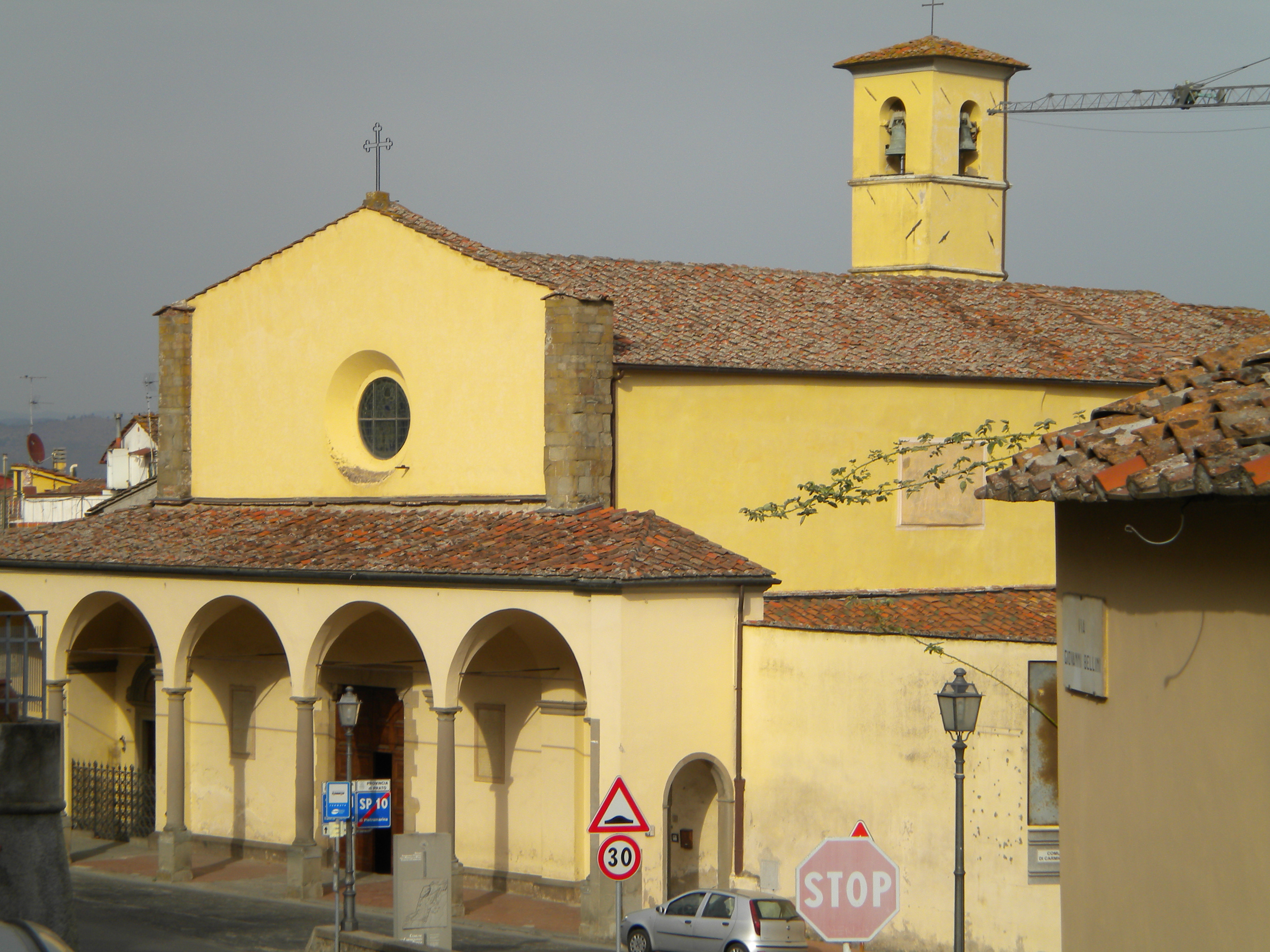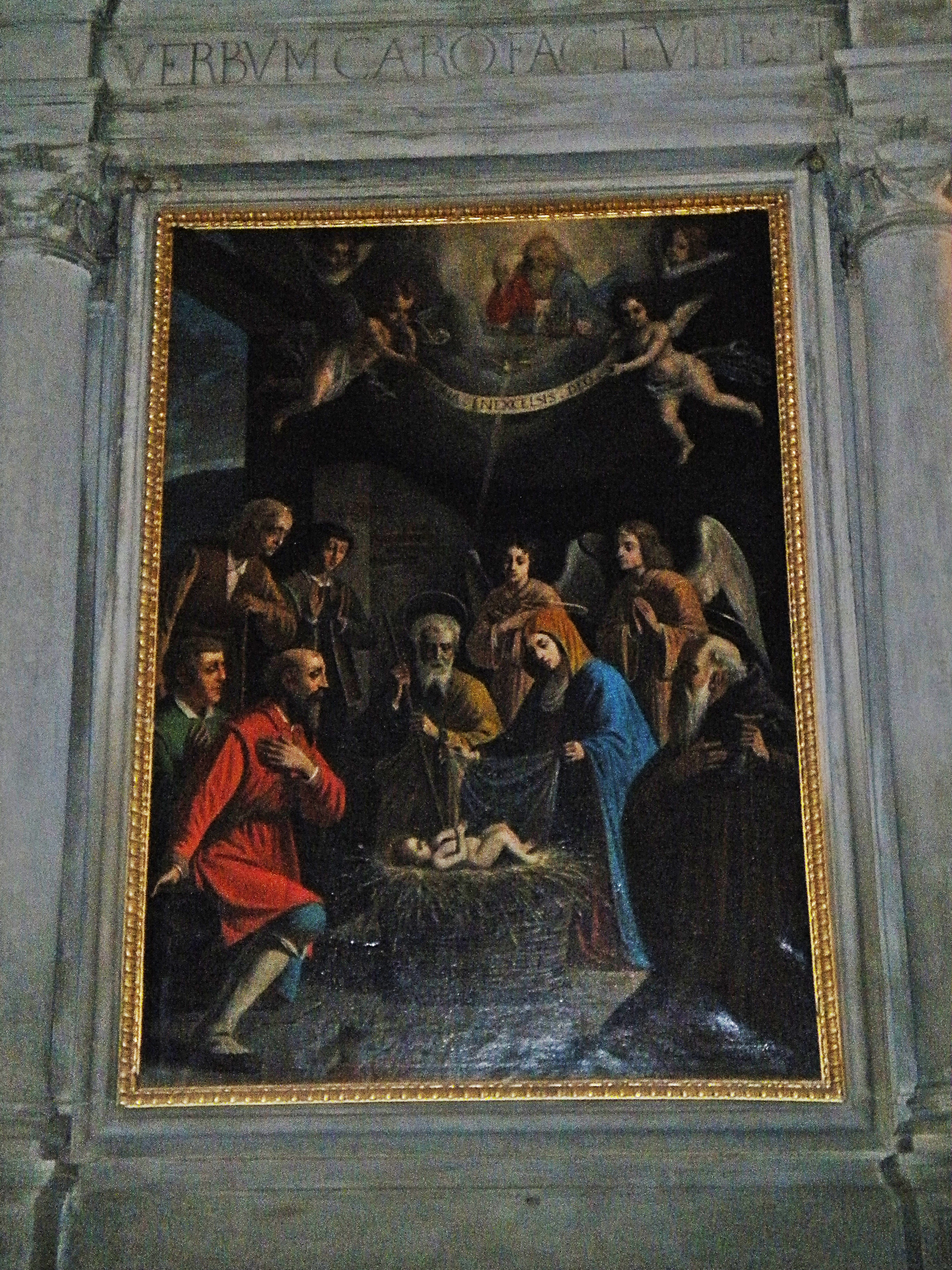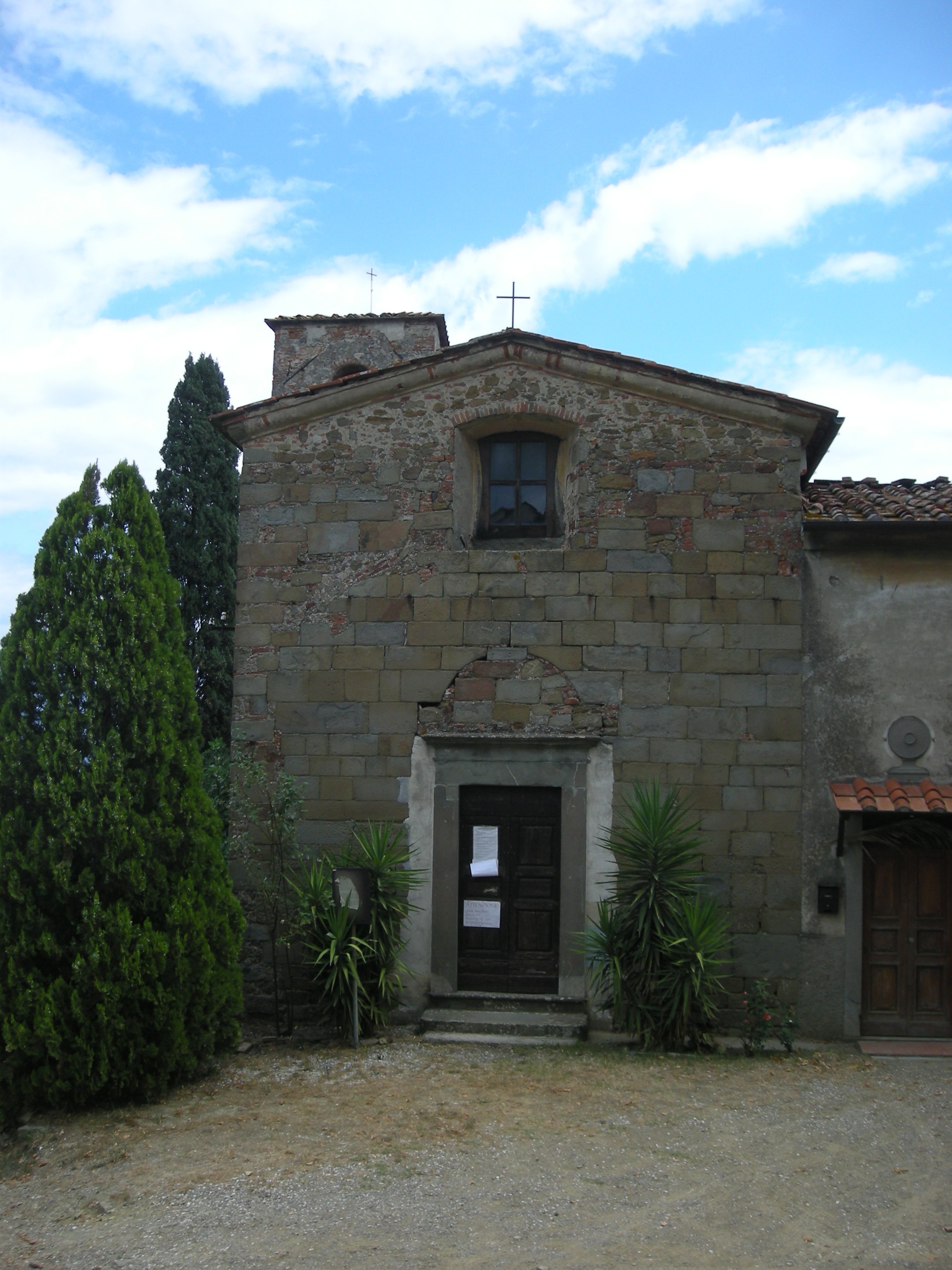|
Carmignano
Carmignano is a ''comune'' (municipality) in the province of Prato, part of the Italian region Tuscany. It is located about west of Florence and about southwest of Prato. It is the centre of the wine region of the same name. Geography Carmignano borders the following municipalities: Capraia e Limite, Lastra a Signa, Montelupo Fiorentino, Poggio a Caiano, Prato, Quarrata, Signa, Vinci. Main sights The most important attraction of the town is the church of San Michele e San Francesco (12th century), which houses a ''Visitation'' by the Renaissance master Pontormo. The 10th century ''Rocca'' (Castle), in the upper part of the town, is well preserved. The ''frazione'' of Comeana is home to several Etruscan tombs (such as the Tumulus of Montefortini), while at Artimino is a Medicean villa. Churches *Abbey of San Martino *Chapel at Villa Le Falene *Chapel at Villa le Farnete *Little church in Castelvecchio *Little church of Toia in Bacchereto *Chapel at the Institute of ... [...More Info...] [...Related Items...] OR: [Wikipedia] [Google] [Baidu] |
Carmignano DOCG
Carmignano is an Italian wine region located in the Tuscany region and centered on the city of Carmignano, about 10 miles (16 kilometers) northwest of Florence. Noted for the quality of its wines since the Middle Ages, Carmignano was identified by Cosimo III de' Medici, Grand Duke of Tuscany as one of the superior wine producing areas of Tuscany and granted special legal protections in 1716. In the 1800s, the producers of the Carmignano region developed a tradition of blending Sangiovese with Cabernet Sauvignon, long before the practice became popularized by the "Super Tuscan" of the late 20th century.K. MacNeil ''The Wine Bible'' pg 376, 386–387 Workman Publishing 2001 In 1975, the region was awarded ''Denominazione di origine controllata'' (DOC) status and subsequently promoted to ''Denominazione di Origine Controllata e Garantita'' (DOCG) status in 1990 (retroactive to the 1988 vintage. Today Carmignano has approximately planted, producing nearly 71,500 gallons ( 2,700 he ... [...More Info...] [...Related Items...] OR: [Wikipedia] [Google] [Baidu] |
Pontormo
Jacopo Carucci (May 24, 1494 – January 2, 1557), usually known as ''Jacopo da Pontormo'', ''Jacopo Pontormo'', or simply Pontormo, was an Italian Mannerist painter and portraitist from the Florentine School. His work represents a profound stylistic shift from the calm perspectival regularity that characterized the art of the Florentine Renaissance. He is famous for his use of twining poses, coupled with ambiguous perspective; his figures often seem to float in an uncertain environment, unhampered by the forces of gravity. Biography and early work Jacopo Carucci was born at Pontorme, near Empoli, to Bartolomeo di Jacopo di Martino Carrucci and Alessandra di Pasquale di Zanobi. Vasari relates how the orphaned boy, "young, melancholy, and lonely", was shuttled around as a young apprentice: Pontormo painted in and around Florence, often supported by Medici patronage. A foray to Rome, largely to see Michelangelo's work, influenced his later style. Haunted faces and elongated ... [...More Info...] [...Related Items...] OR: [Wikipedia] [Google] [Baidu] |
San Michele E San Francesco, Carmignano
San Michele e San Francesco is a renaissance-style, Roman Catholic parish church located in the Piazza SS Francesco e Michele in the town of Carmignano, province of Prato, region of Tuscany, Italy. It is best known for housing the Jacopo Pontormo altarpiece of the '' Visitation''. History The ''pieve'' church was putatively established after a visit to the town in 1211 by St Francis of Assisi. Under the patronage of Bernardo da Quintavalle a small convent and oratory were built. The present church, with a single nave typical of Franciscan churches, was built in 1330, with refurbishments over the centuries. The convent was suppressed in 1798. During World War II, the church was damaged, and reconstruction aimed to restore it to its medieval layout. This joined the church to the Oratory of St Sebastian on the left and the cloister on the right. The portal has a memorial to Giovanni Parenti of Carmignano, general of the Franciscans. The interiors has six lateral altars. The first ... [...More Info...] [...Related Items...] OR: [Wikipedia] [Google] [Baidu] |
Santi Michele E Francesco, Carmignano
San Michele e San Francesco is a renaissance-style, Roman Catholic parish church located in the Piazza SS Francesco e Michele in the town of Carmignano, province of Prato, region of Tuscany, Italy. It is best known for housing the Jacopo Pontormo altarpiece of the '' Visitation''. History The ''pieve'' church was putatively established after a visit to the town in 1211 by St Francis of Assisi. Under the patronage of Bernardo da Quintavalle a small convent and oratory were built. The present church, with a single nave typical of Franciscan churches, was built in 1330, with refurbishments over the centuries. The convent was suppressed in 1798. During World War II, the church was damaged, and reconstruction aimed to restore it to its medieval layout. This joined the church to the Oratory of St Sebastian on the left and the cloister on the right. The portal has a memorial to Giovanni Parenti of Carmignano, general of the Franciscans. The interiors has six lateral altars. The first ... [...More Info...] [...Related Items...] OR: [Wikipedia] [Google] [Baidu] |
Santi Michele E Francesco In Carmignano
San Michele e San Francesco is a renaissance-style, Roman Catholic parish church located in the Piazza SS Francesco e Michele in the town of Carmignano, province of Prato, region of Tuscany, Italy. It is best known for housing the Jacopo Pontormo altarpiece of the '' Visitation''. History The ''pieve'' church was putatively established after a visit to the town in 1211 by St Francis of Assisi. Under the patronage of Bernardo da Quintavalle a small convent and oratory were built. The present church, with a single nave typical of Franciscan churches, was built in 1330, with refurbishments over the centuries. The convent was suppressed in 1798. During World War II, the church was damaged, and reconstruction aimed to restore it to its medieval layout. This joined the church to the Oratory of St Sebastian on the left and the cloister on the right. The portal has a memorial to Giovanni Parenti of Carmignano, general of the Franciscans. The interiors has six lateral altars. The first ... [...More Info...] [...Related Items...] OR: [Wikipedia] [Google] [Baidu] |
San Lorenzo In Montalbiolo
:''There is also a church of San Lorenzo in Carmignano near Foggia.'' San Lorenzo is a romanesque-style, Roman Catholic rural parish church located on Via Montalbiolo #51 in the town of Carmignano, province of Prato, region of Tuscany, Italy. History The stone church was erected in the 12th century, perhaps under the patronage of Countess Matilde di Canossa. It underwent modifications in the 16th and 17th centuries. Among the interior paintings is a canvas depicting ''St Lawrence'' (1605) by Giovanni Bizzelli. The main altarpiece is a ''Madonna and Child with Saints'' (1670) attributed to Simone Pignoni Simone Pignoni (April 17, 1611 – December 16, 1698) was an Italian painter of the Baroque period. He apprenticed with Fabrizio Boschi, then with the more academic and puritanical Domenico Passignano, and finally with Francesco Furini. He is .... [...More Info...] [...Related Items...] OR: [Wikipedia] [Google] [Baidu] |
San Leonardo, Carmignano
San Leonardo is a romanesque-style, Roman Catholic rural parish church located on Via della Chiesa #19/a, just outside of the former castle overlooking in the neighborhood of Artimino of town of Carmignano, province of Prato, region of Tuscany, Italy. History The ''pieve'' church is near the ''Villa Medicea La Ferdinanda''. The church is cited in documents from 998 by Emperor Ottone III. The church was expanded in the 12th century, under the patronage of Countess Matilde di Canossa. In the 14th century, gothic tracery was added to the interior. The bell-tower may derive from one of the watch-towers of the castle. In the 1960s, efforts were made to restore the church to its original romanesque decoration. The walls still contain Etruscan tomb spolia, with some now moved to the local archeologic museum. The belltower was modified in 16th and 17th centuries. The interior houses a wooden polychrome crucifix (1560) and a ''Madonna del Pozzo'', copy of Franciabigio's work. It contains ... [...More Info...] [...Related Items...] OR: [Wikipedia] [Google] [Baidu] |
San Michele In Comeana
San Michele is a renaissance-style, Roman Catholic rural parish church located on Piazza San Michele in the neighborhood of Comeana of town of Carmignano, province of Prato, region of Tuscany it, Toscano (man) it, Toscana (woman) , population_note = , population_blank1_title = , population_blank1 = , demographics_type1 = Citizenship , demographics1_footnotes = , demographics1_title1 = Italian , demogra ..., Italy. History A church at the site was present by the 13th century, but refurbished from the 16th to 18th centuries to its present eclectic appearance. The façade sports the coat of arms of the Mazzinghi family. The bell-tower was erected in 1812. The main altarpiece is a ''Madonna'' painted in the early 18th century. entry on church. Referen ...
|
San Giusto In Il Pinone
The Abbey of San Giusto (Abbazia di San Giusto) is a romanesque-style, Roman Catholic church and adjacent convent located in Via Montalbano in the neighborhood of Pinone of the town of Carmignano, province of Prato, region of Tuscany, Italy. History The abbey is first documented by the 13th century, but likely founded by 12th century. By 1373, it had acquired the title of a priory. In 1535, documents cite a ''Sancto Iusto de Poggiolo'', and by 1582, note that the property was dilapidated. For a time, the property belonged to the monastery of Montedomini in Florence. In 1725, it was officiated for services by the parish of Verghereto Verghereto ( rgn, Vargaréd; Tuscan: (rare)) is a ''comune'' (municipality) in the Province of Forlì-Cesena in the Italian region Emilia-Romagna, located about southeast of Bologna and about south of Forlì. The main parish church is San Mi ..., but by the 19th century, had again fallen to near ruin. During the post-world war II restoration ... [...More Info...] [...Related Items...] OR: [Wikipedia] [Google] [Baidu] |
Florence
Florence ( ; it, Firenze ) is a city in Central Italy and the capital city of the Tuscany Regions of Italy, region. It is the most populated city in Tuscany, with 383,083 inhabitants in 2016, and over 1,520,000 in its metropolitan area.Bilancio demografico anno 2013, datISTAT/ref> Florence was a centre of Middle Ages, medieval European trade and finance and one of the wealthiest cities of that era. It is considered by many academics to have been the birthplace of the Renaissance, becoming a major artistic, cultural, commercial, political, economic and financial center. During this time, Florence rose to a position of enormous influence in Italy, Europe, and beyond. Its turbulent political history includes periods of rule by the powerful House of Medici, Medici family and numerous religious and republican revolutions. From 1865 to 1871 the city served as the capital of the Kingdom of Italy (established in 1861). The Florentine dialect forms the base of Italian language, Stan ... [...More Info...] [...Related Items...] OR: [Wikipedia] [Google] [Baidu] |
Province Of Prato
The province of Prato ( it, provincia di Prato) is a province in the Tuscany region of Italy. Its capital is the city of Prato. It was formed from part of the province of Florence in 1992. The province has an area of and a total population of about 250,000. There are seven comunes (municipalities) in the province. Notable residents * Birthplace of footballer Paolo Rossi. * Birthplace and current residence of olympic gymnast Jury Chechi. * Birthplace of actor and comedian Roberto Benigni. * Birthplace of cyclist Fiorenzo Magni. Municipalities and population Government List of presidents of the province of Prato External links Official website Events in PratoStatistical data [...More Info...] [...Related Items...] OR: [Wikipedia] [Google] [Baidu] |
Tumulus Of Montefortini
The Tumulus of Montefortini is an Etruscan tomb near Comeana, Tuscany, central Italy, which is believed to date from the 7th century BC. The tumulus A tumulus (plural tumuli) is a mound of earth and stones raised over a grave or graves. Tumuli are also known as barrows, burial mounds or '' kurgans'', and may be found throughout much of the world. A cairn, which is a mound of stones ... is an oval burial mound 80 metres long and 11 metres high, which houses two tombs. Excavations began in 1966 and the finds are displayed in the museum of Artimino. References Montalbano website Archaeological sites in Tuscany Montefortini Buildings and structures in Tuscany Montefortini Tourist attractions in Tuscany Carmignano {{Tuscany-geo-stub ... [...More Info...] [...Related Items...] OR: [Wikipedia] [Google] [Baidu] |

.jpg)







